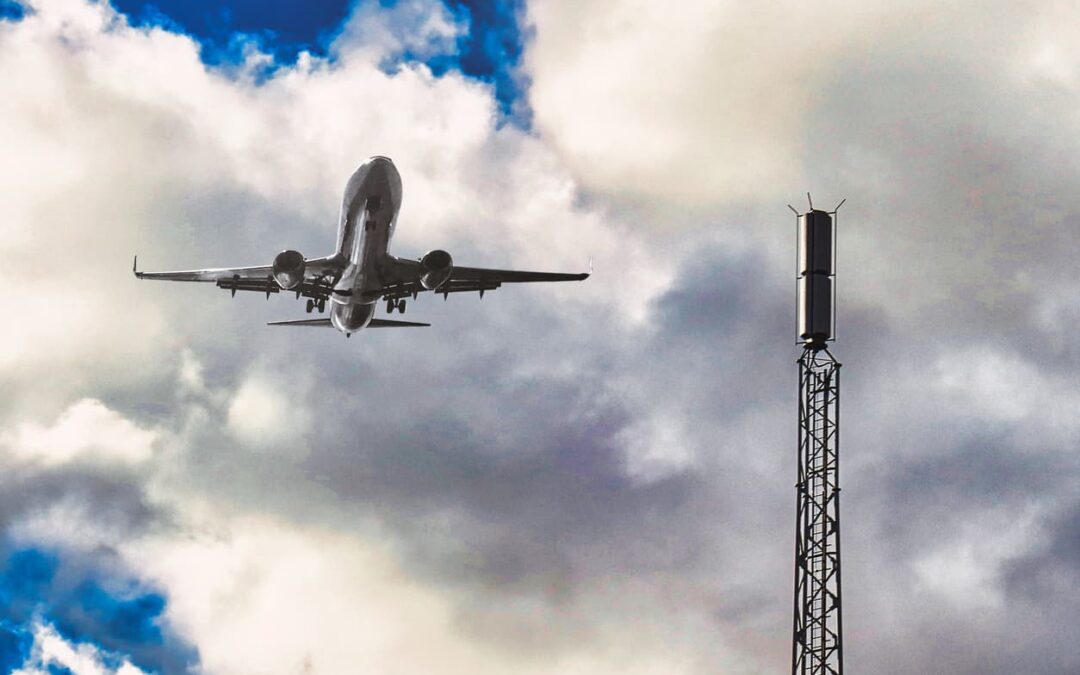
by NMG Aerospace | Apr 20, 2024 | Uncategorized
What is a FAA Repair Station Certification?
In simple terms, a FAA Repair Station Certification is granted to businesses providing aircraft repair services that comply with U.S. Federal Aviation Administration (FAA) regulations. But there is some nuance that should be understood.
There are plenty of non-FAA aircraft repair facilities that may be capable of repairing an aircraft, aerospace component, or assembly. They may understand aircraft repair and maintenance very well. However, only FAA repair stations can perform maintenance or repairs and approve that aircraft or system for return to service afterward. Non-FAA repair facilities do not have the credentials to grant such approvals.
Furthermore, FAA repair stations are certified to perform maintenance and repairs only for certain categories of aircraft and aerospace components. For example, the FAA specifies four classes of instrument repairs. An FAA repair station must demonstrate that they have the facilities, equipment, materials, and other resources required for each class. They may only be rated for Class 2 Instruments, or they may be rated for all four classes. A repair station may also receive a limited rating, which means they can only provide repairs for a specific make and model of a given aerospace system or component.
Why contract with an FAA repair station?
There are many reasons to contract with an FAA repair station. Two of the primary reasons are quality and approvals.
From a quality perspective, FAA repair stations are unparalleled. FAA repair stations must demonstrate compliance with the incredibly stringent requirements of the Federal Aviation Administration. This includes:
- Intensive personnel training.
- Robust quality control and management systems.
- Detailed manuals regarding personnel responsibilities and operating procedures.
FAA repair stations also have the authority to approve an aircraft, component, or assembly for return to service once maintenance and repairs are completed. A mechanic or repair facility without FAA certification does not have the same authority. Legally, you cannot put a part on an aircraft unless it comes from an FAA repair station.
How do I know what kind of work an FAA repair station can do?
FAA repair stations display their operating specifications certificate at their facilities and on their websites. If you are seeking to determine the ratings of an FAA repair station while doing online research, search the website for sections titled “Certificates,” “Approvals,” or “About Us.” You are likely to find FAA certifications in one of these areas.
Each certificate will list exactly which classes of repairs the FAA repair station is rated for. There are six categories of repairs, each of which is broken into classes:
- Airframe – four classes
- Powerplant – three classes
- Propeller – two classes
- Radio – three classes
- Instrument – four classes
- Accessory – three classes
The FAA repair station’s certificate will also specify whether the approval is limited to a specific make or model of aircraft or component.
FAA Repair Stations operated by NMG Aerospace
NMG Aerospace is proud to operate two FAA repair stations near several major transportation hubs:
- Stow, Ohio: Rated for Accessory (Class 1) and Limited Accessory. This facility is also compliant with EASA Part-145.
- Tempe, Arizona: Rated for Limited Airframe and Limited Accessories.
Review our certificates here.
Our FAA certifications are augmented by our fifty-plus years of experience designing and manufacturing aerospace components and aircraft systems. Our deep knowledge of aerospace engineering gives us additional insight into the aircraft repair process.
To start a conversation with NMG Aerospace about aircraft repair services at one of our FAA repair stations, talk to a member of our team.
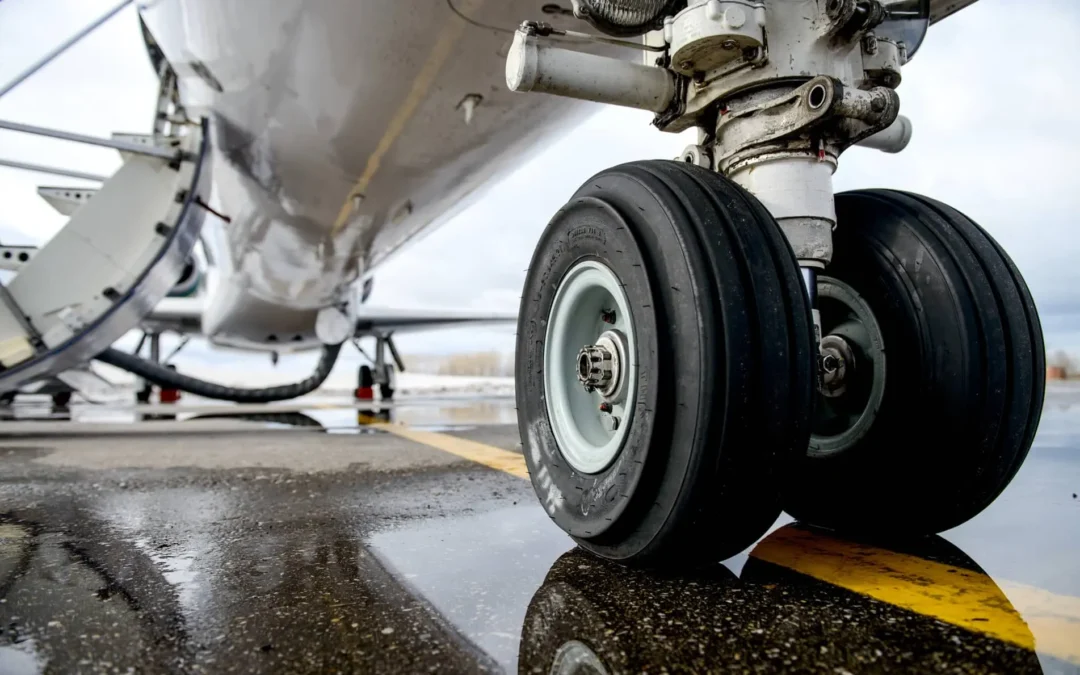
by NMG Aerospace | Apr 8, 2024 | Uncategorized
NMG is proud to lead the industry in aerospace product and assembly design services, supporting our customers in their pursuit of superior aerospace components.
Get in touch.
Product Design for Aircraft System Components
The biggest names in the aerospace industry turn to NMG for aerospace component design services and support. With our expert workforce, comprehensive aerospace manufacturing and design capabilities, and sophisticated processes, we offer advanced insight into the design process and can help our customers take their components and systems to the next level. We have over fifty years of experience as an aerospace component manufacturer, helping our customers solve tough design challenges and distinguish themselves from their competitors in the rapidly changing aerospace industry.
NMG Has Significant Experience Designing Components for Many Aircraft Systems
Aerospace Hoses
From evacuation slide deployment to fluid management systems of all types, every aircraft platform relies on a network for high-performance hoses that can handle extreme temperature fluctuations and other highly variable environmental conditions. NMG has years of experience designing aerospace hoses for easy storage and precise, rapid deployment. We can help you design a reliable hose that performs exactly as intended in all manner of applications.
Aerospace Solenoids And Solenoid Valves
Solenoids use electrical currents to power countless valves throughout many vital aerospace systems and assemblies. In 2016, NMG acquired Electromotive Inc., a leader in the design and manufacturing of custom solenoids, solenoid valves, and actuators since 1972. Today, NMG offers unmatched expertise and design support for aerospace solenoid valves that can integrate seamlessly with other aerospace components in numerous applications and withstand intense environmental conditions, including extreme temperatures and vibration.
Deicing System Subcomponents
From high altitudes to cold climates, aircraft and aerospace components must be able to reliably manage ice buildup. NMG is a key supplier of deicing components and systems to aerospace industry leaders. Our experts have years of experience designing custom deicing components, including pressure regulation, isolation, relief, and distribution valves, to suit a wide range of aircraft platforms. From the validation of new concepts to modifications of existing designs, you can count on NMG for comprehensive deicing system design support and aerospace manufacturing expertise.
Custom Fixtures
In some situations, manufacturing a specialized part requires designing a new manufacturing process, including customized fixtures for welding and fabrication. NMG offers highly customized fixture design for specialty aerospace components and applications. Our experts can develop fixtures that ensure tight tolerances, control shrinkage, and minimize warping on even the most complex aerospace components.
Aircraft Wheels And Brakes
Aircraft wheels and brakes must be designed for both smooth transit and reliable operation in a range of conditions. NMG is proud to support the design process for aircraft wheels and brakes for Tier 1 aerospace companies and beyond. Our aerospace manufacturing expertise extends to multiple types of aircraft braking systems.
Potable Water and Waste Tanks
Potable water and waste management systems for aircraft are expected to adhere to rigorous standards for sanitation and perform in what are often adverse service environment conditions. NMG understands the requirements of aerospace water and waste management systems and engages directly in the design process, informed by many years of experience developing reliable systems and aerospace components for platforms of all types. From thin-walled tanks to precision valves, NMG can help you design exceptional aircraft water and waste system components.
Evacuation System Subcomponents
Aircraft evacuation slides and life rafts must be designed for fast, user-friendly deployment so that the average passenger is capable of operating them in an emergency. NMG has been designing and manufacturing reliable aviation safety system components for many years. We understand the tight storage limitations for these systems, as well as the intense situations in which they are usually deployed, and can help you design each component with those unique factors in mind.
Aircraft Seating
Depending on the platform, different types of aircraft seats are designed with different goals in mind. Commercial seats are designed for comfort, while crew seats are designed for swift and easy folding and storage. NMG can support the design of welded tube frames, folding mechanisms, and stretched and sewn fabric elements of high-performance crew seats. Our design and aerospace manufacturing experience spans from individual aerospace components to full seating assemblies.
Continuous Improvement
NMG’s commitment to continuous improvement is visible in our approach to aerospace component manufacturing and design. Our focus on lean manufacturing gives us a unique perspective on product design as well as manufacturing engineering, resulting in our design strategies, processes, prices, and customer service always being made better. We strive to deliver fresh insight and strategic guidance on every design project and help our customers remain nimble as they navigate the changing landscape of the aerospace industry.
How Can We Support You?
NMG is an aerospace components manufacturer with decades of experience supporting the design and manufacturing process. We leverage exceptional service and peerless design and engineering to help you overcome challenges and take your aerospace components and assemblies to the next level. We can also help you ensure compliance with National Aerospace Standards and other quality standards as you bring your aerospace components to market.
Get in touch.
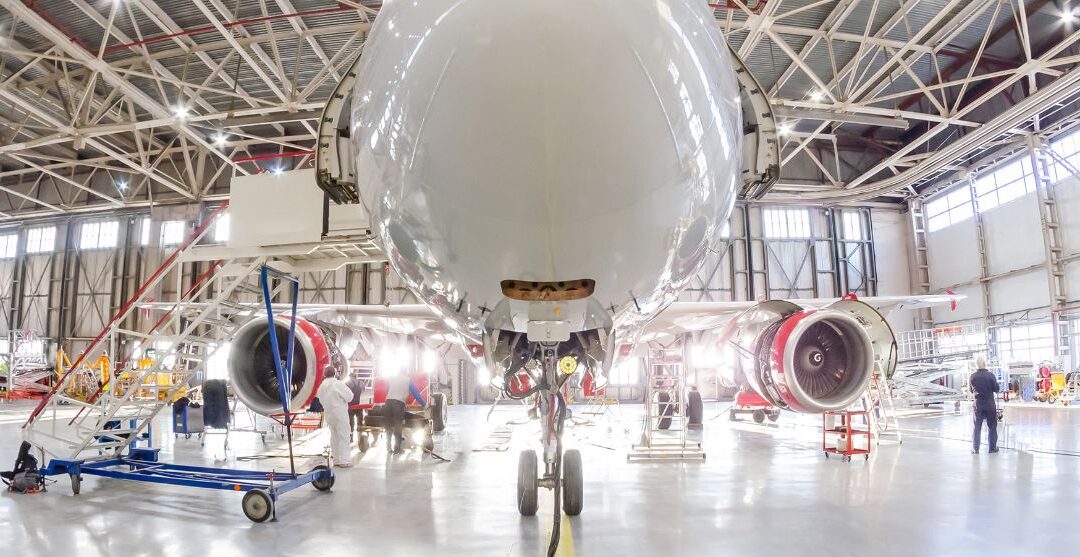
by NMG Aerospace | Apr 8, 2024 | Uncategorized
NMG has spent years building and refining our quality management systems and mastering our offerings so we can provide quality aircraft parts and the best possible service to our valued customers in the aerospace industry. From initial conversations about design to final product delivery, our experts remain dedicated to exceptional quality at every stage of the process.
In addition to our rigorous internal standards, we are proud to have earned certifications and accreditations from respected organizations such as NADCAP, ISO, and the FAA. These organizations develop their quality and performance standards based on the needs of the aerospace industry as a whole. As the industry evolves, standards may evolve as well, based on technological advancements and feedback from manufacturers, service providers, and other leaders.
Our standards, processing, and air agency certifications and approvals are available to view below.
Quality
NMG maintains incredibly high-quality standards at every stage of the design and manufacturing process for aerospace components. Our quality management systems have been assessed and approved per the requirements of three of the world’s most prominent certification organizations: the International Organization for Standardization (ISO), SAE International, and European Association of Aerospace Industries.
We design, engineer, and manufacture quality aircraft parts at our facilities in Stow, Ohio and Tempe, Arizona. Both facilities are AS 9100 and ISO 9001 accredited. Certificates of approval for both facilities can be reviewed here:
NADCAP
The National Aerospace and Defense Contractors Accreditation Program, commonly called NADCAP, is the gold standard for aerospace accreditation. While many standards organizations assess the quality and performance of products, NADCAP certifies processes, such as welding and chemical processing. NADCAP certification offers several key benefits for manufacturers, suppliers, and others in the aerospace industry, including consistency, safety, and market visibility. The NADCAP certification process also enables service providers to identify opportunities for improvement and elevate their offerings.
Earning NADCAP accreditation for aerospace manufacturing services is a rigorous process, requiring intensive preparations, an on-site audit, and a task force review. NADCAP accreditation is only granted to service providers that meet the exacting quality and safety standards of the aerospace industry as a whole. To ensure ongoing adherence to NADCAP standards, the accreditation process must be repeated every twelve months. Learn more about NADCAP.
As part of our mission to design and deliver quality aircraft parts, NMG is proud to offer NADCAP services in both Ohio and Arizona. Our facilities in Stow, Ohio are accredited for NADCAP welding and NADCAP chemical processing. Our facilities in Tempe, Arizona are also accredited for NADCAP welding.
Review our NADCAP certifications here:
Air Agency
Many individual countries and regions have agencies dedicated to aviation safety, such as the Federal Aviation Administration (FAA) in the United States and the European Union Aviation Safety Agency (EASA). One of these agencies’ many functions is awarding certifications to businesses providing aircraft repair, maintenance, and inspection services that comply with their requirements.
NMG is proud to have two FAA-certified repair stations. Our FAA repair station in Tempe, Arizona is approved for Limited Airframe and Limited Accessory. Our FAA repair station in Stow, Ohio is approved for Accessory (Class 1: Mechanical Accessory) and Limited Accessory. The repair station in Stow has also received EASA Part 145 approval.
Review our FAA and EASA certifications here:
If you are met with technical difficulties when attempting to view or print these certificates, consider a free PDF tool such as Adobe Acrobat Reader.

by NMG Aerospace | Mar 14, 2024 | Uncategorized
Every element of an aircraft’s brake system has a distinct and essential role. The brakes generate friction to bring a speeding aircraft to a halt, relying on strong materials and precise mechanics to perform reliably. Join our experts as we dive deeply into how aircraft wheel brakes are manufactured!
Steps Involved
Each step involved in engineering brakes for aerospace landing gear is crucial. Aircraft wheel brakes must be designed correctly, manufactured with appropriate materials, and contain all the essential components.
The key to ensuring your aerospace brakes are engineered correctly is to work with a company that values quality above all else. NMG has built extensive quality control checks and processes into our aerospace manufacturing operations, ensuring that every component meets our customers’ requirements!
Design of Aircraft Brakes
Aircraft brakes must be designed to operate reliably in all conditions. To ensure an aircraft can land safely, you should use the proper brake system based on the aircraft’s size, weight, and speed. Four types of modern brakes are designed for aircraft landing gear: single disc, dual disc, multiple disc, and segmented rotor.
Single Disc
Single disc brakes are designed for smaller aircraft. They are set between two pads and connected to each main landing gear leg. The disc is set on the wheel, allowing the disc and the wheel to rotate in unison. As brakes are applied, the caliper presses the pads against the disc braking the aircraft.
Dual Disc
A dual disc system is used for aerospace brakes when single disc systems would not create enough braking friction to land safely. In this design, two discs are attached to the wheel and a center carrier is set between them. When the pilot applies the brakes, the center carrier linings make contact with the two discs and the wheel decreases in speed.
Multiple Disc
Multiple disc systems are designed for large, heavy aircraft. They are built on an extended bearing carrier that holds alternating steel stators and discs plated in copper or bronze. The stators are covered in brake lining which is designed to press against the rotors. Hydraulic pressure on the piston compresses this mechanism, which creates friction, slowing the aircraft wheels.
Segmented Rotor
This brake system is a variation of a multiple disc system, but contains modifications and upgrades. In a segmented rotor brake system, the brake rotors are designed with fixed high friction brake linings which make contact with rotors to slow the wheel. The rotors have slots cut into them, allowing any heat to escape. Segmented rotor brake systems are the standard on high-performance aircraft.
Materials
The rotors of disc brakes have historically been made with either iron or steel. However, this presents a problem for heavy aircraft because of the heat produced from high levels of kinetic energy. This causes steel or iron brakes to lose efficiency – something you can’t afford with aircraft brakes. Instead, many designers have begun using carbon fiber on disc brakes. This decreases the weight of the brake system and improves high-heat performance.
Components
There are various components involved when engineering aircraft brakes. Commercial, business, and military aircraft require high-quality, high-functioning brake sleeves, torque tubes, back plates, and discs that are equally reliable in both low-stress and high-intensity situations.
Common Problems With Aircraft Brakes
Understanding how aircraft brakes are engineered is important, as is knowing how to spot and fix a potential problem. Even the highest quality brakes will face wear and tear, needing maintenance occasionally. Below are three common problems that can be quickly handled when caught early.
Overheating
Aircraft brakes face a common issue: overheating. This could be caused by the design of the brakes or by high-braking maneuvers. To solve this problem, you can utilize a segmented rotor brake system and practice braking in a way that generates less heat whenever possible.
Dragging
If you feel a dragging sensation when letting off of the brake pedal, there could be a problem with the return mechanism, a weak return spring, a warped disc, or air in the brake fluid line. A trusted technician can fix any of those problems.
Chattering
Aerospace brakes can get loud, making a chattering or squeaking noise. This happens if the brake lining is not pressed evenly against the disc. A realignment or replacement of parts may be necessary to fix this problem.
Brake Safely Every Time With NMG
NMG’s dedication to exceptional quality management at every step of the manufacturing process results in exceptional brakes that function seamlessly in every operating environment. Let’s talk about how we can support your aircraft brake system!

by NMG Aerospace | Mar 14, 2024 | Uncategorized
Since 1967, NMG Aerospace has been a leader in aerospace and defense manufacturing and engineering. A key element of our strategy is recruiting and developing exceptional talent. NMG is proud to offer exciting career opportunities, competitive benefits, and a healthy work environment to those interested in a career in the aerospace industry.
At NMG Aerospace, our dedication to teamwork, innovation, and integrity in the workplace has made us a leader in the aerospace industry. We strive to create an environment where our team members are encouraged to learn and grow, and are inspired to bring their best ideas forward.
Career Paths
All companies should prioritize the career development of their employees, especially in the aerospace industry where unique technical requirements demand skilled professionals. When an employee feels like they have reached their maximum potential and there is no further room for growth, they may become disengaged from their work. At NMG Aerospace, we understand the significance of employee growth and development. We value each employee’s voice and strive to maintain open lines of communication to provide growth opportunities.
NMG offers top-notch training, on-site mentors, and leadership development programs to help our employees build successful careers. We also offer opportunities for new students and graduates who want to enter the aerospace manufacturing industry.
Benefits
NMG understands the importance of investing in the health and wellbeing of our valued employees and their families. We are proud to offer a competitive benefits package including a 401(k) retirement savings plan with a generous company match, paid time off (PTO), and medical, dental, vision, and prescription insurance coverage. Our employees also enjoy flexible scheduling options, reimbursement for protective footwear, and referral bonuses, along with many other benefits.
Diversity and Inclusion
An unwavering commitment to strong diversity and inclusion practices is vital in the modern workplace. NMG Aerospace is proud to welcome and affirm employees from all backgrounds. We are always working to nurture an environment where our team members feel safe, supported, and celebrated. We believe that a wide range of perspectives and experiences is the foundation for vibrant communities and exceptional ideas.
Culture
Workplace culture is the product of countless factors and variables, from new employee orientation to the relationship dynamics between team members and their leaders. NMG Aerospace has developed a robust onboarding program for new team members to support seamless integration into our organization and mitigate the anxiety that often accompanies starting a new job. Our initiatives include:
- The NMG Co-Pilot program. Each new employee is paired with an established team member who can answer questions, offer support, and help the new employee settle into their role.
- Our Chat-N’-Chew Luncheons. Team members gather over a meal to get to know new employees, build relationships, and nurture a feeling of belonging.
Central to NMG’s culture is a company-wide commitment to LEAN manufacturing and continuous improvement. Every employee undergoes intensive training on these subjects to create a culture in which all team members feel empowered to share their ideas for improvement. By inviting input from all team members, regardless of seniority or role, we foster an environment where every employee feels valued.
FAQs
NMG values transparency throughout the hiring process. Answers to frequently asked questions are listed below. More answers about our recruitment and hiring practices can be found here.
By submitting an application, does this consider me for all open positions?
No. When you submit an application and create a username and password, an electronic employment profile record is created. You must then indicate which position or positions you are interested in. Our automated system will then route your profile to the appropriate department. You can use your username and password to view the status of your application within our system and apply for other open positions at NMG Aerospace.
I’ve applied and received a confirmation email indicating my application was received. When can I expect to hear from NMG Aerospace?
After you submit your application, the hiring manager and recruitment team will review your resume and determine whether you meet the qualifications for the position. A recruiter will typically contact you within two weeks. NMG notifies all applicants of the final status of their candidacy.
Does NMG have different work shifts?
Yes. NMG runs three shifts: first, second, and third. Shift times and durations vary by operating location. To ensure transparency and clear expectations, details are included in each job posting and discussed during the interview process.
Where is NMG Aerospace located?
The NMG Aerospace corporate office is co-located with multiple production facilities at 4880 Hudson Dr, Stow, OH 44224. An additional production facility is located in Arizona at 2223 S. Wilson St, Tempe, AZ 85282.
Launch Your Aerospace Career With NMG
NMG is committed to our mission of developing, building, and delivering exceptional components. To join our team and make your mark on the aerospace industry, explore open positions at NMG.
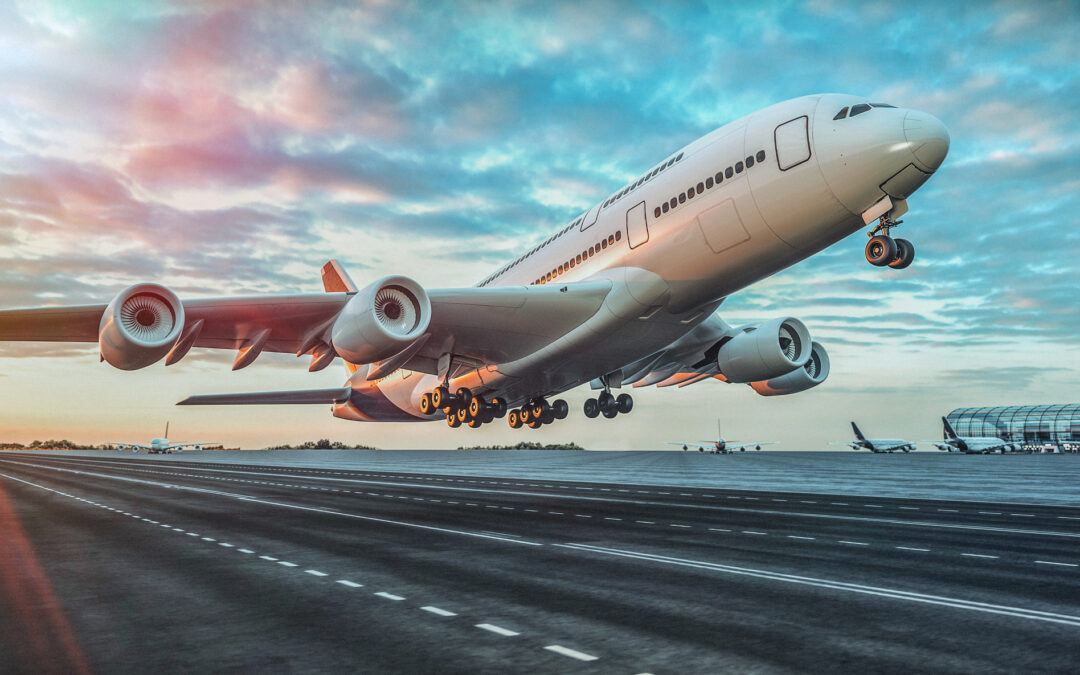
by NMG Aerospace | Mar 6, 2024 | Uncategorized
Five Aerospace Manufacturing Industry Trends For 2024
Trends come, and trends go – even in the aerospace manufacturing industry! But how do we know which ones are here to stay? By staying on top of aerospace news and growth, our team of experts has compiled a list of the top 5 trends you will see making a difference in aerospace manufacturing this year. From a focus on sustainability to the use of drones (unmanned aerial vehicles), we can’t wait to see how these advancements benefit our customers in 2024!
1. Increasing Aerospace Sustainability
One of the largest trends is a movement toward global sustainability efforts. This can even be seen in mainstream news as more and more people are discussing the problem of carbon emissions from the excessive use of private jets. With more than 100 countries agreeing to reduce carbon emissions by 5% in 2030, now is the time to focus on sustainability in aerospace manufacturing.
A major focus of the sustainability movement is on using alternative energy sources such as electric flight technology or sustainable air fuels (SAF) – whose emissions have a shorter life cycle. At NMG, we are monitoring further research to ensure our operations advance to be as sustainable as possible.
2. Innovated Propulsion Systems
In a continued desire to reduce the aerospace industry’s environmental footprint, 2024 is bringing innovation to propulsion systems. Manufacturers of these systems face challenges such as the thermal management of engines, noise pollution, and fuel efficiency. However, we see these dilemmas being addressed as our industry takes advantage of improved cooling technologies and sound-reducing devices and introduces sustainable fuel solutions.
3. Artificial Intelligence and Machine Learning
Another trend is artificial intelligence (AI) and machine learning (ML) in aerospace manufacturing and how they can improve operations, reduce costs, and create a safer working environment for employees. This technology can be used for predictive maintenance, autonomous systems, and advanced manufacturing techniques. As more and more people become comfortable with artificial intelligence, we expect aerospace manufacturers to depend on it more than ever before.
NMG drives innovation by utilizing the latest technologies – but a computer could never replace a valuable team member. Our responsive team is dedicated to your product – from concept to ongoing technical support. That is one thing that AI could never do.
4. Utilizing 3D Printing
Production lines in the aerospace manufacturing industry are often waiting on components that are lightweight, intricate, and difficult to produce. The traditional way of manufacturing these parts is slow and costly. However, as 3D printing becomes more advanced, our industry has begun taking advantage of it as a production method. Fused deposition modeling (FDM) and electron beam melting (EBM) allow for faster development of essential aircraft components. The growing use of 3D printing is cost-effective and minimizes waste!
5. Unmanned Aerial Vehicles Production
With the costs of traditional aircraft growing due to component size and quality control – the need for unmanned aerial vehicles (UAVs) has never been higher. UAVs offer a cheaper option for transportation of goods, surveillance, and combat uses. They are also a safer option for industries such as infrastructure inspection and maintenance, eliminating the need for humans to perform risky tasks. As UAVs offer advanced capabilities, we foresee more aerospace manufacturers adding them to their production lines.
Looking Ahead at NMG
From its founding over half a century ago, NMG has been pushing the envelope of progress and helping shape the future of the aerospace manufacturing industry, one component at a time. At NMG, we stay on top of industry trends and will continue pushing the boundaries of our industry. Learn about our contribution to the aerospace manufacturing industry.
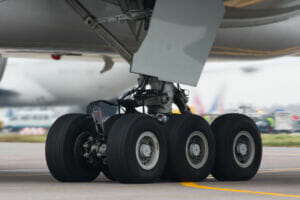
by NMG Aerospace | Feb 9, 2024 | Uncategorized
Why are Aerospace Brakes Important?

Aviation has become synonymous with speed thanks to depictions in movies, video games, and other stories. There is no denying that speed is imperative for most forms of air travel. However, as important as speed is, there is something even more important: the ability to slow down. All the speed in the world is not worth anything if you can’t stop at the end of your flight. That is where the unsung heroes of flight come into play: the aerospace brakes.
What Engineering Considerations Need Made for Making Aerospace Brakes
Functional aerospace brakes are crucial when it comes to the building of a plane or spacecraft. However, even though they exist across the vehicle production spectrum, that does not mean all aerospace brakes are alike. Various considerations need to be made depending on certain factors.
Type of Aircraft
The make and model of the aircraft will determine the type of aerospace brakes necessary for a successful landing. A large cargo plane will need heavy-duty aerospace brakes to halt a massive aircraft traveling quickly. However, a fighter jet with a significantly smaller and nimble body will have different aerospace brake needs. The same can be true for all variations of aircraft, ranging from spacecraft to single-engine planes.
Consumer Needs
Even though all aircraft fly, the individual plane can provide service for various specific tasks. For example, small passenger aircraft can double as postal planes in certain areas. The plane’s determined use will make a difference in its outfitted equipment and, in some instances, the necessary braking apparatuses.
Materials Used
Different materials may be required when manufacturing brakes for any aerospace project. From R&D to manufacturing, the materials used will vary based on the type of component or aircraft being manufactured. Aircraft disc brakes require rubber or latex components to operate the hydraulic aspects, while speed brakes located on wings will be manufactured from the same composites as the wings, spoilers, or flaps.
How Do the Brakes Interact with Other Parts of the Aircraft
Landing Gear
The landing gear is one of the most pivotal aspects of any aerospace design. It is a complex piece of machinery that requires the integration and synchronization of various components; any failure of these components could result in a crash. The landing gear is deployed during the descent of an aircraft to allow the wheels to come into contact with the ground. Once the wheels have begun spinning on the ground, the aerospace brakes are then activated to slow the vehicle. They apply friction and pressure to the apparatus to reduce the high speed of the wheels to the point where the plane can stop safely.
Wings
Speed brakes are an important part when altering the speed of a plane or other aircraft. Panels, spolers and flaps can be built into the wing to slow down the plane while in the air or to lower overall speed for any required maneuvers. Speed brakes catch the wind and produce a negative force proportional to the speed of the plane going in the opposite direction. This will work to slow down the plane, effectively acting as another brake.
Cockpit
The cockpit is instrumental for most of the plane’s functions. It serves as a control center for all the operations required for flight. From here, the speed brakes can be deployed, the landing gear lowered, the brakes against the wheels, and, in some cases, drag chutes released. The pilot orchestrates everything from the cockpit.
Pull Out All the Stops with Parts Built by NMG
Aerospace brakes are a critical part of any air or spacecraft. However, they are not the only ones. Every aircraft component must meet expectations and spec requirements to achieve successful and safe flights. NMG Aerospace has manufactured aerospace brakes and other components for over 50 years – contact us today to pull out all the stops on your aerospace designs.
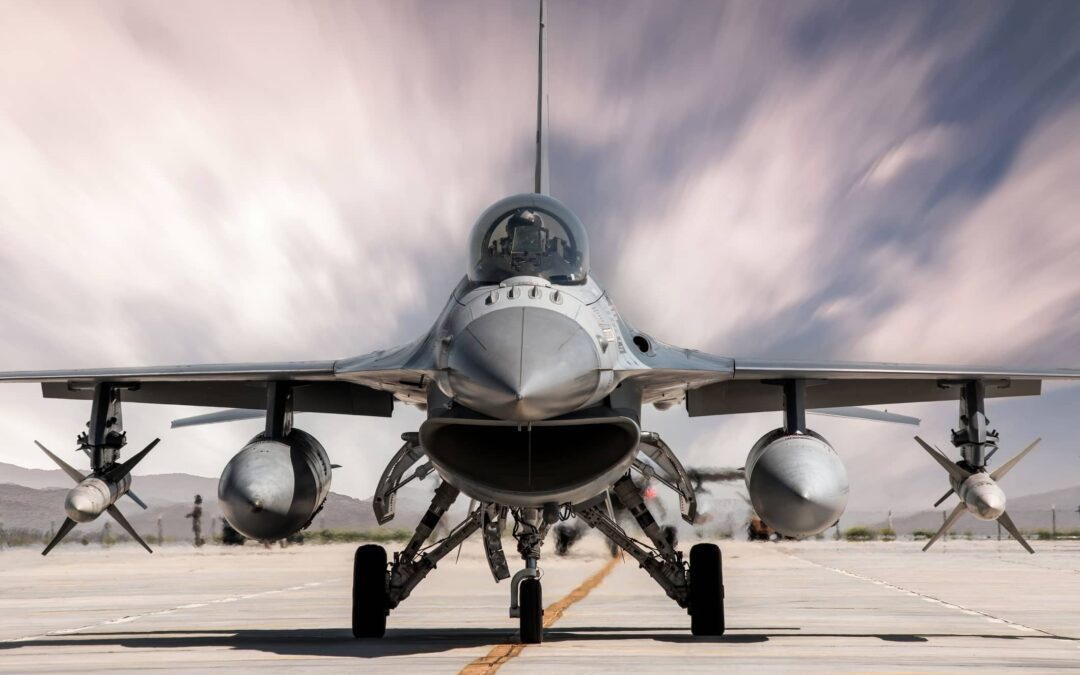
by NMG Aerospace | Dec 13, 2023 | Uncategorized
How Military Aircraft Manufacturing Differs From Commercial
Despite wanting to provide the highest quality of airplane parts and machinery across the spectrum of our clients, certain considerations need to be made for specific clients. This devotion to quality is especially true of our military aircraft contracts. It’s not that we do not want our commercial assets to be as safe and functioning as possible. It’s that the military has a different set of specifications that may not translate to our commercial needs. Our military aircraft parts must withstand high speeds, hold up against g-forces, and be continuously durable, even under extreme conditions. To learn more about the high quality of care and precision that we offer for our brave troops, keep reading.
Military Requirements that Affect Aerospace Manufacturing
High Speed
Despite the efficiency and speed that we enjoy in our commercial aircraft, it is not comparable to what is expected and demanded from our more powerful aerospace engineering creations designed for the military. The military aircraft we build must be able to travel at incredible speeds to perform their missions. These speeds come at a cost: the wear and tear they place on the machines we have created. As the plane goes faster and faster, it inherently will begin to place strain on essential machinery. To put this off for as long as possible, we must ensure that our aerospace design can withstand the pressure they place on themselves to travel at such extreme speeds. It could prove catastrophic for the pilot and our entire country if poor military aircraft manufacturing caused a mission to fail. That is why all the military aircraft parts we design are pushed to the limit to ensure they can fulfill our speed needs.
G-Forces
Another sort of pressure placed on a military aircraft is not simply mechanical but a natural occurrence when a plane reaches ludicrous speeds. G Force is the force of acceleration that gravity puts on everything on Earth, which is 9.8 meters per second squared. When you travel at that same rate in a military aircraft, you are experiencing the equivalent of the Earth’s gravitational pull. If you travel DOUBLE that rate, you experience DOUBLE the standard force of gravity. Certain military aircraft can experience up to 9 G’s. That is nine times the Earth’s gravitational pull pressing against the pilot and his precision aerospace vehicle. That is why our parts are held to the highest standard and put through the most rigorous testing available to ensure that when a pilot travels at such intense speeds, the military aircraft can hold up.
Durability
In one way or another, all these points have to do with durability. However, there are different types of durability. A military aircraft must withstand several times the rate of the Earth’s pull, but that won’t necessarily help if it has to make an emergency landing. The aerospace engineering needs of our country are tremendous and occasionally require our troops to engage in hostile environments. These environments include mountainous regions, arid deserts, or swampy jungles. All these different biomes have different challenges that must be prepared for. That is why we must consider precision aerospace crafts’ durability while actively performing and their durability regarding their ability to land and take off again. It all matters.
NMG’s Experience With Military Aerospace Aircraft
NMG has had military contracts throughout its half-a-century of operations. This means we have been in operation since the Vietnam War, through the end of the Cold War, Desert Storm, and the War on Terror. We have had decades of experience providing quality military aircraft manufacturing and learning what it takes for aerospace engineering to lead to victory. To this day, we provide the highest care and quality assurance necessary to ensure our troops have everything they need to keep us and every other American safe.
Quality Military Aerospace Designs From NMG
As always, NMG remains on the cutting edge of aerospace engineering. Whatever the day’s needs are for keeping our country safe, we can provide the designs necessary to ensure victory. Contact NMG today to begin a conversation about your aerospace engineering needs.

by NMG Aerospace | Nov 26, 2023 | Uncategorized
The Role of Engineering in Aerospace Innovation
NMG has been committed to innovation since its inception as one of the leaders in aerospace manufacturing. We recognize the importance of remaining cutting-edge and pushing the boundaries of established aerospace technology. We have over 50 years of experience making discoveries, driving innovation, and finding new ways to improve and benefit air travel. Keep reading to learn more about where we’ve been and, more importantly, what the future may hold.

NMG’s Techniques to Develop New Technologies for Aerospace Innovation
Customer satisfaction is always a priority for any successful business. However, it is not merely a priority for NMG but one of our core values and beliefs. Providing an outstanding product for our clients is the basis for everything we do. It is the source of inspiration for our commitment to aerospace innovation and our identity. We continue moving forward through three specific schools of thought that drive our philosophy regarding innovative aerospace engineering: understanding client goals, reverse engineering, or starting with a clean slate.
Understanding Client Goals
What sets NMG apart from our competition is that we listen to our clients. We focus firmly on the feedback and the aerospace manufacturing requests made by our clients. We consider what they need, and from there, we begin researching and experimenting with our wide array of aerospace technology to see what we can do to make those goals a reality. Through this process, we can bring exciting innovations into reality. With these developments, we can further the cause of excellence within the aerospace manufacturing industry.
Aerospace Innovation Reverse Engineering
It is exciting to take new ideas from the ground up. However, there is something to be said about not reinventing the wheel. Often, the most revolutionary and innovative ideas are simply continuations of existing products and developments. This occurrence is the backbone of our second most utilized creative mindset: reverse engineering. Reverse engineering looks for what already exists and then takes the next step. We follow the trail backward of that design. We seek an opportunity to go a different path and make entirely new innovations from the original blueprints.
Clean Sheet Design
There are opportunities for an entirely new process of aerospace manufacturing that starts from the ground up. When these times arise, we must throw out everything we have done previously. From here, we focus on a clean slate of aviation innovation ideas to bring the desired need to fruition. When faced with such a situation, we have to employ what we call clean sheet design.
This action is naturally a very radical and intensive aerospace engineering design opportunity. It ultimately does provide results, but it takes time. However, when completed, we have something entirely new to aerospace engineering, unlike anything seen before. You never know what innovations might come from a clean sheet design, but it is always exciting. For more information regarding this type of innovation, check out our previous blog post: Clean Sheet Design: Designing New Aircraft Technology.
Aerospace Innovation Examples from NMG
One only has to take a fleeting look at all of our aviation innovation ideas to see everything that we have contributed to aerospace and all the innovations we have created to make our company successful and profitable. However, there are a few examples of aerospace engineering that we are specifically proud of that we would like to highlight in this paragraph.
Safety Features
Safety features are one of our series of new innovations that are particularly relevant in a successful airplane. We are very proud of our contributions to ensuring a safely operating machine. Our proprietary brakes, motorized and pneumatic valves, solenoids, and gages are a few of our more elite creations driving the aerospace engineering industry forward.
Landing Gear
On the same page as safety equipment, we have also contributed great strides in aerospace innovation to the landing gear requirements. After extensive research and design, we are pleased to say that our actuators, braking apparatuses, and wheels are of the highest quality in any other manufacturing facility.
Fluid Systems
In addition to our outstanding safety equipment, we have made significant contributions regarding fluid systems with our airplane parts. These can be seen through our development of gauge tanks, reservoirs, and extensive hose upgrades.
Engineering Aerospace Innovation Technologies With NMG
Ultimately, our top priorities at NMG are keeping people safe and for our machines to do their job. We want to do our job the best way possible. This way, you can accomplish your tasks and your goals similarly. As a result, we are constantly driving ourselves forward to create the best products available. Looking for an aerospace manufacturer committed to an excellent customer experience while producing the highest quality parts available? Look no further than the best aerospace engineering organization in the country: NMG. Contact us today.

by NMG Aerospace | Nov 9, 2023 | Uncategorized
Importance of Weather & Aerospace Engineering
Aircraft are operated outdoors, in a wide range of weather conditions. While some weather patterns are too extreme for safe flight, aircraft must still endure quite intense conditions while in flight.
While some types of weather have more significant aviation impacts than others, all environmental conditions can affect flight. Understanding the effects of rain, snow, wind, and ambient temperature on the aircraft is critical to designing, engineering, and manufacturing quality aerospace components that can perform as designed regardless of the forecast.
How Weather Affects Aviation
Rain
While a minor rain shower may not have much effect on flight, heavy rainfall can present some challenges when the aircraft is still on the ground. Taxiing through deep water is different from taxiing on a dry runway, and the aircraft’s tires must be able to maintain adequate grip on the runway surface during takeoff and landing.
Cold Weather
Cold weather can bring snow and ice. Snow and ice buildup on an aircraft can affect the aerodynamics of the aircraft’s crucial structures, such as the tail and wing. This affects drag and lift and can lead to stalling, which can be dangerous. For this reason, preventing snow and ice buildup is critical when flying in cold weather.
Hot Temperatures
The primary risk associated with heat is overheating of vital aircraft components, such as brakes, air systems, and electronic equipment. These malfunctions can be very dangerous. Additionally, extreme heat often reduces ambient air density, which can affect takeoff.
These are just a few examples. Severe thunderstorms and hurricanes, volcanic eruptions, salt air, and countless other weather events and conditions can affect the performance of aerospace components and the aircraft as a whole. All relevant conditions must be considered when designing a component that can withstand them all.
Engineering Aerospace Products to Withstand Weather Conditions
One excellent example of a quality aerospace component designed to withstand intense weather conditions is the motor valve. Motor valves are designed to withstand a wide range of extreme conditions, such as freeze/thaw cycles. Because motor valves are often used in a section of the aircraft without temperature control, these components may encounter a temperature swing from 130°F or higher to -70°F in the span of forty-five minutes, as the aircraft travels from desert-level heat on the ground to the below-freezing temperatures at altitude.
Other challenging conditions often facing motor valves include:
- Shock
- Vibration
- Electromagnetic interference
There are separate design engineering standards for each of these conditions that must be met in order for the motor valves to be approved for use on an aircraft. In other words, a vast array of requirements and criteria must be met during the design process to ensure proper performance and durability of a motor valve.
This is simply one example. Countless systems throughout the aircraft must be designed and engineered to withstand a range of weather conditions and continue to perform as intended under rapidly changing conditions.
Aerospace Parts for All Conditions & Applications With NMG
The team at NMG Aerospace has a deep understanding of the impact of weather conditions on flight and aviation. With our years of experience in aerospace component design, engineering, and manufacturing, we understand how to balance a long list of performance requirements. We can work with you to develop an effective aerospace component design that takes into account the myriad environmental challenges the component may face while in service.
To learn more about designing aerospace components for weather conditions and discuss your next project, talk to a member of our team >

by NMG Aerospace | Nov 9, 2023 | Uncategorized
Purpose of Clean Sheet Aircraft
When needs arise in a given marketplace, such as the aerospace industry, that need can often be fulfilled by modifying or tweaking an existing design, concept, or product. However, with the aerospace industry changing and advancing at a rapid pace, completely new needs—gaps in the marketplace—are appearing on a regular basis, needs that cannot be met with existing solutions. This calls for a completely new design, called a clean sheet design.
Clean sheet aircraft are the product of entirely new designs, driven by significant technology shifts or changing demands in the marketplace. These aircraft leverage completely new aircraft designs and concepts with no real predecessors in the market. Clean sheet aircraft can play a significant role in driving the aerospace industry forward and exploring the possibilities of flight.
Clean Sheet Engineering Process
Understanding Client Goals
The first step of the clean sheet engineering process is a conversation with the client. This conversation may serve as the moment when the client and the engineer determine that a clean sheet design is, in fact, necessary. Once the client’s needs and goals are understood, the engineer can determine whether an existing project will suffice or whether they need to start from scratch.
Innovation & Creative Thinking
The next step is to begin drafting a new design that meets the client’s needs. Clean sheet design relies on the same long-standing engineering principles as a modified design, but leverages them in new and innovative ways. This stage is defined by creative thinking.
Engineering Prototypes
Once the engineering team has a few solid ideas to work with, the next step is to test those clean sheet aircraft designs. This requires building physical prototypes that can undergo various tests and assessments, to validate the concept and determine whether it’s viable. Building a few different prototypes allows the engineering team to test multiple ideas before deciding which direction they want to explore, whether that’s choosing a single idea or combining the principles of two ideas into something totally different.
Quality & Safety Testing
Once a clean sheet design prototype has been tested for viability, it must be tested for safety and quality. While these two categories of testing are different, they overlap in many ways. Both quality and safety testing are designed to assess the longevity and functionality of a component or part and its ability to function as designed in a variety of applicable service conditions. This stage of the clean sheet design process is crucial to determining whether an idea is not only viable but feasible and practical in the real world.
Aerospace and Aircraft Engineering With NMG
NMG Aerospace is proud to support our clients’ dedication to innovation and creative thinking via clean sheet design of a wide range of aircraft and aerospace components. In collaboration with our clients, we have developed and manufactured clean sheet designs of:
- Fluid system components, including many varieties of aerospace hoses, gauges, tanks, and reservoirs.
- Safety system components, including gauges, pneumatic and motorized valves, solenoids, and brakes.
- Landing gear components, including wheels, actuators, and braking components.
At NMG, we embrace the challenge and excitement of pursuing brand-new ideas via clean sheet design. Our team has years of hands-on experience supporting the design and manufacturing of aerospace components, and we can leverage that rich history to develop innovative new approaches in partnership with our clients.
Whether you’re in the early brainstorming stages of the aircraft design process or ready to begin testing a new idea, NMG is here to support you. Talk to a member of our team >
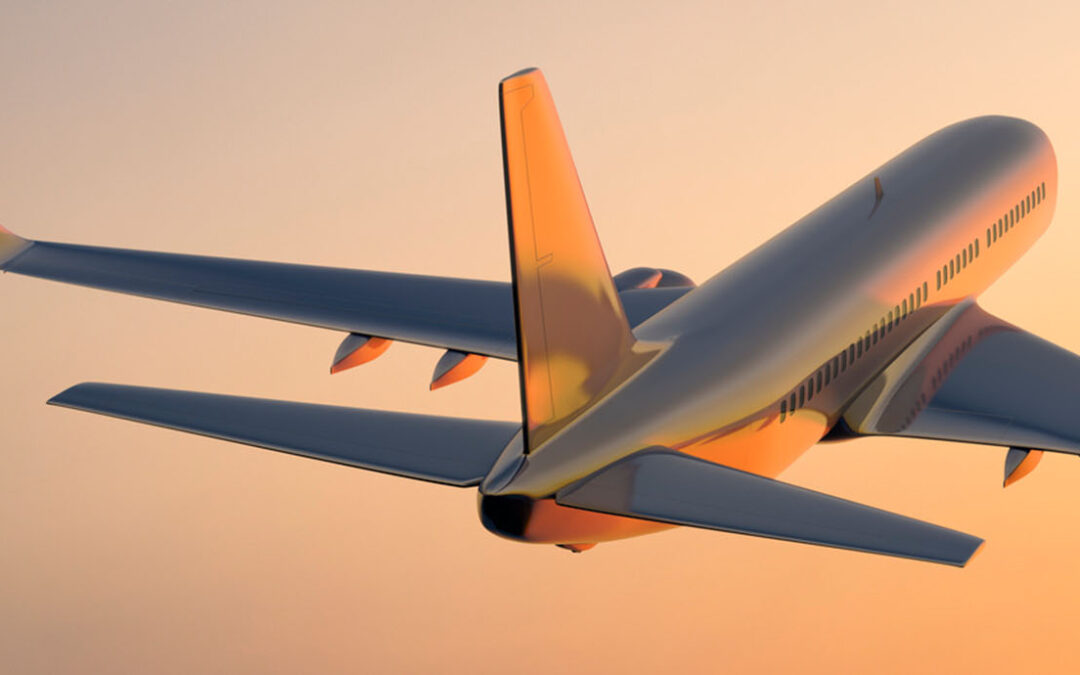
by NMG Aerospace | Oct 9, 2023 | Uncategorized
Importance of Manufacturing Experience
When it comes to large-scale production for a critical industry, such as aerospace, there’s simply no replacement for manufacturing experience. Excellent manufacturing is a product of efficiency, quality, and the ability to accommodate highly specific needs. These valuable traits are the product of many years of honing and streamlining processes, from the ramp-up period to final quality assurance.
Many aerospace companies don’t have the luxury of waiting around for a manufacturer to fix a mistake or figure out a plan for a complex project. Experienced manufacturers can leverage their long track records and deep knowledge to ensure maximum efficiency at every stage and deliver a finished product that matches spec, every time.
NMG’s Aerospace Engineering Experience
NMG has been providing excellent aerospace engineering services and supporting the aerospace industry since 1967. For over fifty years, we’ve played a critical role in the evolution and advancement of aerospace and aircraft technology by solving complex aerospace engineering services for our valued customers. We take great pride in crafting better aircraft components by leveraging our aerospace engineering expertise to make systems more efficient and effective. Whether we’re finding a way to fit a complex system into a limited space, increase the reliability of a critical safety component, or design a new and improved manufacturing process, NMG is determined to meet our customers’ needs and get it right the first time, every time.
How Experience Affects Aerospace Manufacturing Today
Working with an experienced aerospace manufacturer benefits customers in a few key ways, ranging from deep perspective to faster execution of critical manufacturing stages:
Deep Industry Knowledge
While a reputable manufacturer won’t share anything that violates the intellectual property of another client, experienced manufacturers do have the wisdom of many years to offer. An experienced aerospace manufacturer can give advice based on the successes, setbacks, and advancements they’ve witnessed during their long tenure in the aerospace industry. This educated perspective can be a tremendous advantage, especially when exploring new ideas.
Faster Ramp Up Times
Experienced manufacturers need less time than their greener counterparts to get ramped up for a new project and start production. Because they’ve completed so many successful projects, they can draw on their past manufacturing experience when devising and executing a ramp-up plan, rather than having to start from scratch every time. This can significantly shorten the overall timeline of the project.
Able to Meet Demand
Experienced aerospace manufacturers often have greater capacity and flexibility to offer, as well as the ability to accommodate specific, even unusual, needs. Because they’ve spent so many years expanding their capabilities and executing a wide range of projects, they can meet demand for complex specs and large orders.
Ensure Product Meets Specifications
Experienced manufacturers are well versed in the rigorous standards and specifications of the aerospace industry, set by both regulatory bodies and other manufacturers, and can help their customers meet those high expectations.
Experienced Quality Aerospace Manufacturing With NMG
NMG Aerospace has been in the aerospace manufacturing and design business for decades. During that time, we’ve honed virtually all of our processes to ensure smoother operations, better quality, and maximum efficiency, so we can get it right the first time, every time. We can meet demand, even under unusual or urgent circumstances, faster than the competition, so we can keep your project moving forward and get you exactly what you need.
To learn more about our manufacturing experience, our approach, and how we can support even your most complex projects, talk to a member of our team >













